Nanette_Grebe/iStock/GettyImages
Given periodic outbreaks of illness linked to leafy, green vegetables, you may be wary of serving any vegetable or fruit that has not been thoroughly cleaned. And knowing that mushrooms are grown in organic fertilizer made from manure may not make serving them unwashed seem all that appetizing. Still, most gourmet cooks caution against washing mushrooms -- but doing so will not damage them. Even unwashed, pre-sliced mushrooms can be thoroughly cleaned without hurting their tender texture or spoiling their uniquely earthy taste.
Brushing
Brushing mushrooms is the preferred method of many traditional cooks because it involves no water at all. Mushroom brushes come in many shapes and sizes from a sort of over-sized toothbrush to small, round brushes sometimes shaped like button mushrooms and painted to resemble cartoon toadstools. All mushroom brushes have very soft, fine bristles like those on an infant’s hairbrush to ensure that the mushroom is not scratched or gouged while being cleaned.
Brushing sliced mushrooms can be a chore because they have many more nooks and crannies than whole mushrooms do. Hold a few mushroom slices in one hand and brush them lightly with the brush in the other. Work in one direction to avoid spreading any dirt trapped in the bristles back onto the mushroom slices.
Wiping
Wiping mushrooms with a damp paper towel is an efficient way to remove dirt and debris without soaking the mushrooms in water, but it takes a very sure hand with a light touch to wipe down sliced mushrooms without breaking them. Wet a few paper towels under the tap and wring them out until they are barely damp. Hold a small batch of sliced mushrooms flat on your palm and gently wipe them down with a bit of damp paper towel wrapped around your index finger. Change the position of the paper towel every few wipes so that you are always using a clean spot. Wipe away all visible dirt and put the mushroom slices into a small bowl rather than back in the original container or they’ll just get dirty again.
Spinning
Salad spinners use centrifugal force to fling excess water off of greens that have been washed, and they can do the same for your dirty mushrooms. Barely dampen the mushrooms so that the dirt will stick to the water droplets. Place the mushroom slices into the salad spinner and either turn the handle or turn it on. Spin them for no more than a few seconds. This works best on mushroom slices that are going to be chopped up rather than ones that you prefer to remain as intact as possible.
Rinsing
The most effective way to clean mushrooms of any kind is to simply rinse them off. They will not absorb enough water to make a difference in their texture or taste as long as you don’t immerse them in water and leave them there.
Place the mushroom slices into a colander or mesh strainer. Gently shake the strainer back and forth to wiggle off as much of the dirt as you can. Turn on the cold-water tap and run the colander or strainer back and forth under the stream of running water. Shake the colander or mesh strainer to remove the excess water and to reposition the mushrooms. Rinse them again and repeat until there is no more visible dirt. Blot the mushrooms dry with paper towels and continue with your recipe.
Related Articles

How to Cook Chanterelle Mushrooms

How to Soften Mushrooms
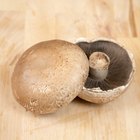
How to BBQ Portobello Mushrooms
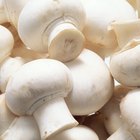
When Can Kids Eat Mushrooms?

How to Cook Mushrooms as Hamburger Buns
The Best Way to Cook Morel Mushrooms
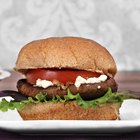
How to Cook a Portobello Mushroom Burger

How to Cook Breaded Mushrooms in the ...

How to Bake Mushroom Caps
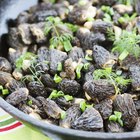
How to Bake Morel Mushrooms

Stuffed Mushrooms & a Lot of Water on ...

What Seasonings Taste Good on Mushrooms?

How to Soak Porcini Mushrooms

Can I Cook With Mushrooms That Have ...
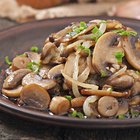
How to Grill Mushrooms on the Stove
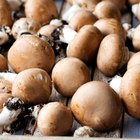
How to Cook Baby Portobello Mushrooms ...
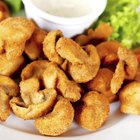
How to Deep Fry Mushrooms With a ...
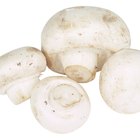
Portobello Mushroom Vs. Button Mushroom

How to Cook Dry Chanterelles

How to Cook Maitake
References
Writer Bio
Brynne Chandler raised three children alone while travelling, remodeling old homes, taking classes at the Unioversity of California Northridge and enjoying a successful career writing TV Animation. Her passions include cooking, tinkering, decorating and muscle cars. Brynne has been writing fun and informative non-fiction articles for almost a decade. She is hard at work on her first cookbook, which combines healthy eating with science-based natural remedies.